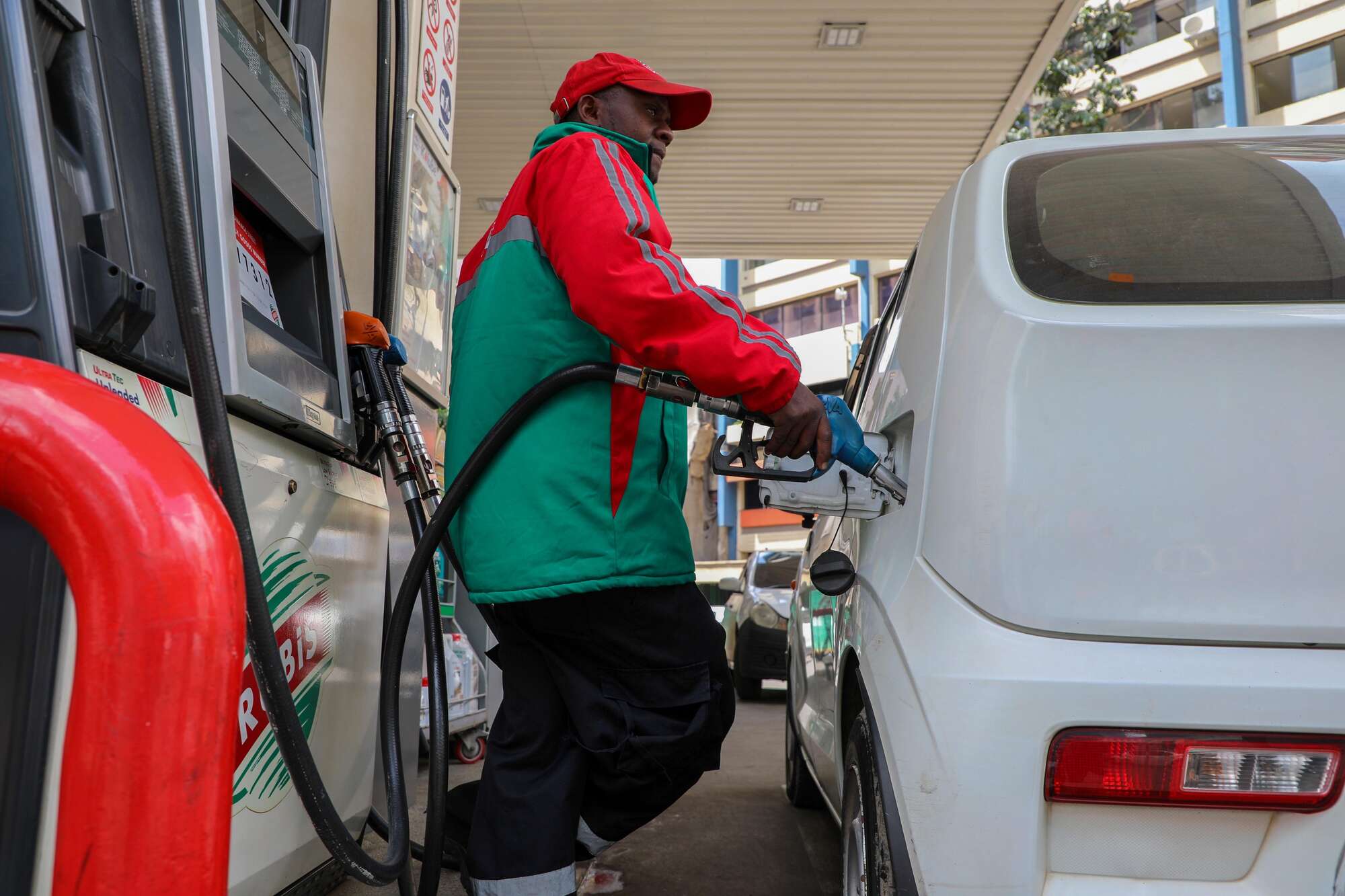[ad_1]
Commodities
Fuel consumption drops to five year low as Kenyans keep cars at home
Tuesday October 03 2023
A customer attendant serves a client at Rubis Energy along Koinange Street Nairobi on June 14, 2023. PHOTO | DENNIS ONSONGO | NMG
Fuel consumption between January and June dropped to the lowest levels in more than five years, excluding the Covid-19 pandemic period, amid high pump prices that depressed demand and pushed the middle class to keep their cars at home.
Official data show that consumption of super petrol dropped five percent to 1.01 billion litres from 1.074 billion litres last year while that of diesel fell four percent to 1.31 billion litres compared to 1.36 billion in the same period.
This is the lowest consumption of the two fuels in five years, excluding 2020 when restrictions imposed to curb the spread of the coronavirus led to reduced demand from the transport and manufacturing sectors.
Read: Government now takes up to Sh79 in tax for every litre of fuel
The drop is likely to impact the growth of the country’s gross domestic product since fuel consumption is one of the major drivers of the economy.
Consumption is expected to dip even further in the second half of this year when the impact of the doubling of Value Added Tax (VAT) on fuel to 16 percent and discontinuation of the price stabilisation scheme that has since sent pump prices to historic highs is captured.
“We are dealing with several governments and the suppliers of these products. We are likely to be going to even harder times,” Energy Cabinet Secretary Davis Chirchir said last month.
A litre of super petrol is currently retailing at Sh211.64 in Nairobi while that of diesel is going for Sh200.99 following the last pricing review in mid-September, with the government warning of even higher costs in the coming months.
Consumers had been grappling with costly fuel even before the record-high prices announced two weeks ago after the State started a phased withdrawal of a subsidy scheme that was used to cushion Kenyans for two years.
In the monthly pricing review that kicked in from March 14, a litre of super petrol rose to Sh179.30 from Sh177.30 the previous month.
Prices of diesel jumped to Sh168.40 in that monthly cycle from Sh162 the previous month, hitting consumers in Kenya’s largely diesel-run economy.
Consumption of diesel stood at 1.16 billion litres while that of super petrol was 868.68 million litres in the first six months of 2020 after the country imposed restrictions following the outbreak of the Covid-19 pandemic.
Diesel consumption dropped sharply in the months of April, May and June in 2020 in the wake of an economic shutdown due to the stringent measures imposed by the government to curb the spread of the virus.
Diesel is the dominant fuel for public transport service providers and the agricultural sector for powering machinery such as tractors and harvesters. The fuel is also used by thermal power plants to generate electricity.
Kerosene, the other fuel that has been under the subsidy scheme since 2021 and which is used for lighting and cooking by low-income homes, also posted a drop in the first half of this year.
Consumption of kerosene dipped to its lowest, including the coronavirus period, with homes using 43.59 million litres between January and June this year, a 27.6 percent drop from 60.21 million litres in a similar period last year.
Between January and June 2020 when the country was thrown into a Covid-induced lockdown, homes used 119.1 million litres of kerosene — the highest in a similar period since 2019.
The State scrapped the fuel subsidy in the monthly pricing schedule to October 14, sending fuel prices to sky-levels and hitting demand, with traffic snarl-ups significantly going down in the past two weeks.
Kenya had since 2021 been subsidising pump prices to ease the impact of high global prices of refined fuel, but pressure from the International Monetary Fund and struggles by the Exchequer to compensate oil marketers prompted the withdrawal of the scheme.
The impact of the high pump prices will be reflected in the consumption data for the period between July and December.
Businesses have already warned that they may be forced to lower production or hike prices in the wake of a spike in energy costs, setting up Kenyans for tougher days ahead.
Kenya and Uganda now have the joint highest prices of diesel and super petrol in East Africa, significantly higher than those of Tanzania, Rwanda and DR Congo.
Read: Ruto’s fuel cushion U-turn unsettles investors
A litre of diesel is going for the equivalent of Sh189.38 in Tanzania, Sh177.72 in Dr Congo and Sh180.64 in Rwanda.
Super petrol is retailing at Sh186.47 in Tanzania, Sh179.18 in DR Congo and Sh198.12 in Kigali, Rwanda. Prices of refined fuel have been on the rise since the beginning of this year, a situation that has been worsened by the decision by major oil-producing countries, including Saudi Arabia and Russia, to cut supply.
This has had a knock-on effect on economic activities in non-oil-producing countries such as Kenya, which imports all of its fuels.
→ [email protected]
[ad_2]
Source link



